116 people answered 9 questions about Paid Newsletters; FULL REPORT
Reader survey report in the name of collective benefit and transparency. Paid newsletters are relatively new and we’re all trying to figure out how to relate to it. Come join the conversation!
Hi there,
This letter may appear cut, please click “view full message” or read it on the web here.
First and foremost a huge THANK YOU to everyone who participated in the survey that went out last week regarding reader behaviour and reflections around paid newsletters on
(the platform I use to host this newsletter-blog).I intentionally made the questions multiple-choice in order to easier compare statistics and make an overview:able report for everyone concerned. We can probably all imagine the results of an open ended survey sent out primarily to writers… it would’ve been an entire book!
Please feel welcome to cross-post, link to or reference this report in any resource you may have for your audience if that’s your thing. If, on the other hand, this type of conversation frustrates you (but you’re still too curious to not check it out), you’re also warmly welcome and I truly hope you find some bits of value too.
Disclaimer: This report is part of my pre-launch preparation for the upgrade of my publication Follow Your Gut.
Rather than turning on the paid option from the beginning “and hope for the best”, I started this project 3 months ago with a clear intention in mind: To share the creative (and entrepreneurial) process as transparently as possible with all that it entails.
Who am I to do such a thing?
I’ve lived off my art and creativity for my about 8 years (my embroidery art business took off while I was still at university in Paris 2016). To start a business is one thing, to maintain one is another, which requires a great lot more perseverance and commitment. If I’m able to positively impact one creative who wishes to go for their dreams and learn how to create something that can be sustainable in the long term, then I’ll consider myself successful.
To be an artist can be lonely, but only so lonely as one allows it to be.
We can also choose to get together, get vulnerable, share, ask questions and open the conversations that most never dare to have. THAT my friends, is how you make progress both on an individual and collective level.
Ps. If you haven’t subscribed already, I invite you to do so, this will be fun!
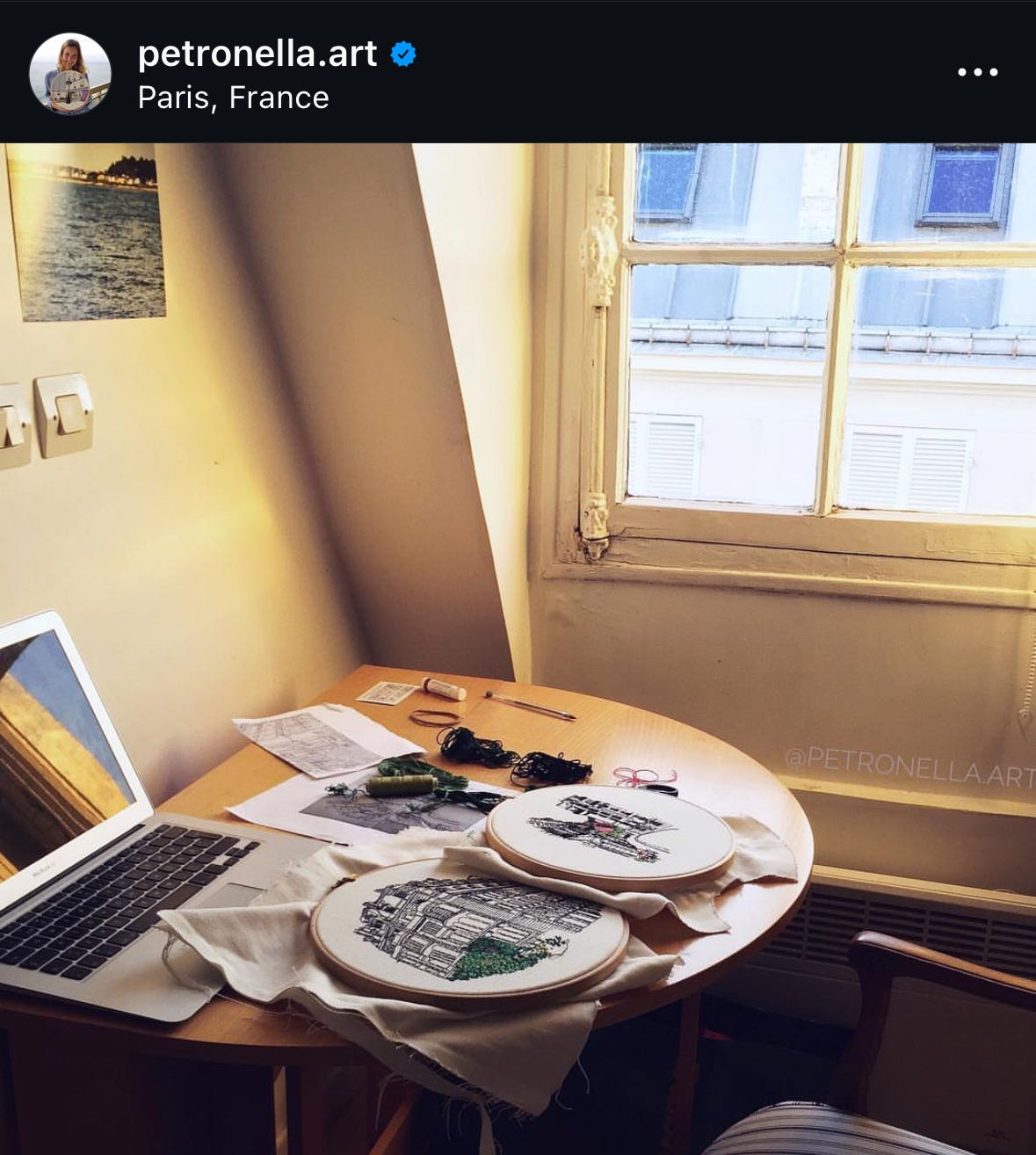
Are you currently paying for any newsletters?
We can interpret these numbers differently, but my spontaneous reaction is incredibly positive. 68% have already adopted the paying to read model, which is encouraging to new writers on the platform (like myself).
It can be equally encouraging to consider 32% as potential newbies (with a less stretched reader budget) that we have the honour to try and convert into the world of service through creative writing.
The latter is quite interesting to reflect on as it’s still a relatively new thing to pay for a newsletter. It’s more common that a newsletter serves to sell other external products and services, not as the actual thing itself, which is what makes it so intruiging. Here you can read about my dream for this newsletter.
What’s the main reason you pay (or would consider to pay) for someone’s publication? (you can choose multiple)
Another equally exciting (and perhaps confirming?!) result is the fact that the large majority pay for the writing itself, NOT necessarily all the extras.
Less than 50% upgrade as a result of the extra offerings and yet I dare to say that more than 50% of authors worry themselves sick about all the extras they think they need to provide…
I’ve said it before and I’ll say it again: We don’t need more stuff, we need better stuff.
In sales the idea of “value stacking” is very popular where one adds so much value to an offer with the intention to make the potential buyer almost feel silly not to join. But this is ONLY effective if it’s the RIGHT value add-on and the RIGHT buyer (at the right time).
This is one of the reasons why I think it’s so brilliant to have it confirmed that the most important is the writing… If the writing isn’t good enough, the extras won’t even be considered.
As a result, focus your efforts on developing your craft and the rest will fall into place (and you may very well find yourself without the need to stretch yourself too thin with zoom calls, because your writing will be enough if that’s what you’re here for).
Is joining a community a big factor for you to upgrade to paid?
Another metric that confirms the previous statement: Focus on your writing first, the rest will fall into place.
People will not sign up for the community unless the writing is valuable. HOWEVER, community may be what makes some people stay longer.
Let me rephrase that: A community is most likely not a pull-factor that makes someone upgrade. But a well nurtured community can be the deal breaker to make readers stay longer.
How to nurture a good community spirit?
Personally, I don’t think community has to be equalled to live group calls. Rather, and this is my personal opinion, you can foster community by being responsive, encouraging and supportive in comments.
I’m blessed with a very high average engagement rate on all my writing these past few months, which I think can be partially attributed to it being my main call to action (read: invitation to get involved in the conversation), and partially to me making a great effort to respond to all comments at this stage.
As I continue to grow this may be a deciding factor to lock comments to paid members only, but for now it’s still manageable and frankly one of the most enjoyable aspects of the whole platform so I’d like to keep that open for as long as possible.
Does it change your willingness to financially support a newsletter if you know what the income does for the author?
This question had VERY polarizing opinions in the “other” answer field.
Anything from it being super important to always express gratefulness to those feeling uncomfortable knowing how much the author needs the money, especially if it gets marketed in a “victimisation” or “guilt-tripping” way.
The last one is what caught my attention because it’s something that I’ve recognized more and more in the online art business space since 2020 (and I frankly feel very relieved to finally know I’m not the only one who’ve seen it).
I think we can all agree that someone who has a paid feature on means that they consider their work to;
deserve to be paid for,
and they need the money in one way or another.
But truth is, nobody else chose for us to do our art no matter how important it is that we do it.
This doesn’t mean that one shouldn’t be paid. Clearly, I support the notion that artists should be paid rightfully for their efforts. But we must never forget that for whatever the neighbour cares, we could’ve taken “just a normal job” like everyone else.
Nobody owes you their hard earned money as much as you don’t owe them to give your work for free. We, as creatives, must find a good balance in how we present our work to be of use and value to our audience in order for a mutually perceived fair value-exchange to take place. (And I guess this is where the real art to sell our art lies….)
What’s the main reason you stop paying someone? (You can choose multiple)
Not much more to comment here apart from it being consistent with the previous responses around the writing’s importance.
The irony was mostly in the added comments under “other”, where some stated they stopped because it was too much to read/too many posts and others because it wasn’t enough (not enough for the money).
When I first joined I got surprised with the general culture of one post per week, which I spontaneously felt was too few for the price. However, I also recognised that different types of content take different amounts of time (level of research etc.) so quantity and quality goes hand in hand depending on niche and style.
“En smaksak” as we’d say in Swedish or literally “A taste-thing” but more like “depending on one’s preference” in English.
What’s your opinion about paywall placement?
This was a spicy one! The results fluctuated between top and middle until the very end.
The added commentaries were very black or white; “I hate them in the middle, makes me waste time” or “I hate when they send out emails where you can’t even read anything”.
This is a really tricky question, because some appreciate a preview before deciding whereas others don’t want to waste their time reading half if they know they can’t/won’t upgrade.
I can empathize with those who expressed frustration receiving paywalled emails without even a preview (especially if the majority of the emails are paywalled and still sent to free subscribers).
Simultaneously I recognise that each time you send out a paywalled post to your free list you have the chance of receiving new paying members.
The answer is going to be very individual (and perhaps it’s why many resort to no paywalls at all to not have to think about it), but there certainly needs to be a fair balance of content being sent out to free vs. paid.
Do you prefer to pay for newsletters yearly or monthly?
I was beyond curious for this one as I find myself frequently bouncing between the two.
The monthly is great when you’re not certain you’ll be able to enjoy the writing for a consistent period of time. The yearly is great when you feel confident in the author and can therefore enjoy a great deal.
From an author perspective I think it’s important to consider what YOU prefer as well. A yearly gives more money up front, whereas the monthly allows you more of a “minimum monthly check” each month, which can feel quite nice from a stability stand-point.
Depending on your preference the pricing should be reflective of that. For example to promote the yearly sign ups you should have a significant benefit for the yearly upgrade, whereas if you prefer the monthly you can keep the difference less extreme.
Considering that a majority prefer to sign up monthly, you don’t have to make a big deal to get a majority of monthly subscribers anyhow (the effort will mostly be for the yearly if that’s a priority).
What do you think is a reasonable monthly/yearly charge?
As a writer I love the 3% gang, but it’s unfortunately not for the large majority and I’d still want my work to be accessible.
Ps. The Substack algorithm clearly needs some math classes adding the percentages up to 101, haha, or only me who noticed that right away?
Some would argue to place yourself higher to be able to easier make discount offers without “losing” too much. Whereas others (I like this one) is to go out low and make “price-bump” campaigns/offers instead as you slowly raise your pricing.
What’s your thoughts about discount campaigns?
I was admittedly surprised over these results. It’s great news that most don’t care whether there is a discount or not (it also makes sense from the perspective that 4 or 6 bucks isn’t a massive difference in one month… the real discrepancy happens when added up for twelve).
Regarding the “devalue” option, I wish I had asked a follow-up question whether the frequency of those campaigns matters or not. Personally I find discount campaigns to be very effective when there is a clear financial benefit to the upgrade.
But if the campaigns happens too frequently, I will be less prone to jump onboard because “I know it’s coming again soon” or perhaps unconsciously it can makes me want to join less (psychology is so fascinating isn’t it?!?!)
Interestingly, I’ve noticed that discount offers are more or less the only “campaigns” that we (at least for me) see on Substack. I definitely want to make a great early-bird deal when I launch my paid feature in the next couple of weeks, but I’m also keen on exploring and experimenting with other types of campaigns than purely discounts… Time will tell!
To conclude…
Anything that revolves money is a tricky subject. Even more so when it involves art and someone’s labour of love. I hope this survey gave a glimpse into some of the things we all think about (referring especially to the fellow writers on here) and gave some more food-for-thought as we progress on the development of our own publications.
It’s probably worth to keep in mind that the majority of respondents are fellow writers and almost all are active on the Substack platform. However, whether that is a limiting factor or not I leave up to you to decide. Considering the rough statistics of 40 million readers out of which 3 million are paying for a publication, there is a lot of potential earning to tap into from within the network.
Last but not least; This is only a small aspect of what it means to be a writer and creative entrepreneur. As
mentioned earlier today, if the number of subscribers (paid or free) is your only metric you will end up a miserable writer. We must focus on the deeper purpose and mission for our work, the impact we wish for it to have on other people, the connections it may bring and opportunities to grow as people.Thank you so much for reading!
Elin, xx
I genuinely hope you got as much value out of this as I did, please let me know in the comments what surprised you the most and why;
Ps. I’m in the process of preparing my launch and this little note and frequent mentioning is a transparent effort in warming up the part of my audience who may be interested to keep an eye out for when it goes live…
There will definitely be a significant benefit to come along with the early-bird offer, but you’ll still get a ton of value staying a free reader too so no sweat. I’m in the category of wanting my work to be read and spread for greater positive impact and will thus find a way to accommodate both sides. Stay tuned!
Extra thanks to the contributors who requested to be notified and join the conversation! What surprised you the most or were the results expected?
, , , , , , , , , , , , , , , , , , , , , , , , , , , , , , , , , , , , , , , Hi there, new here?
I’m Elin, Swedish (expat) artist and mother of two who have plunged into the unknown of Substack as a new writing home. Despite having 500k+ across mainstream social media platforms for my embroidery art, I decided to start afresh here. It’s hard, thrilling, heavy and joyful all in ones. Come and join me for the ride if you haven’t done so already! You can expect thought-provoking and poignant writing about creativity, life and soulful art business with a touch of motherhood.
You can also check out the how, why, who and what in the post below:



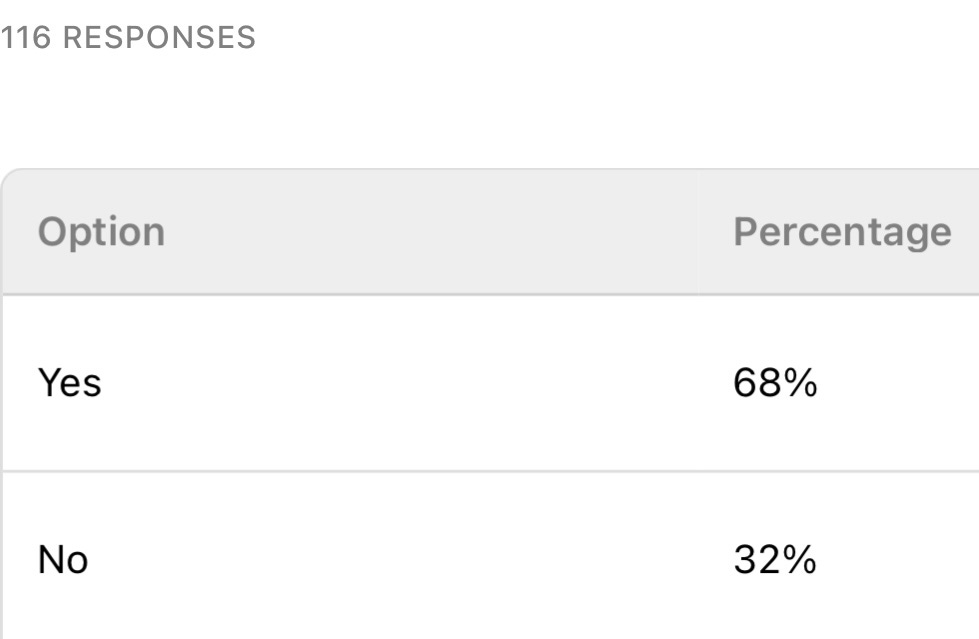
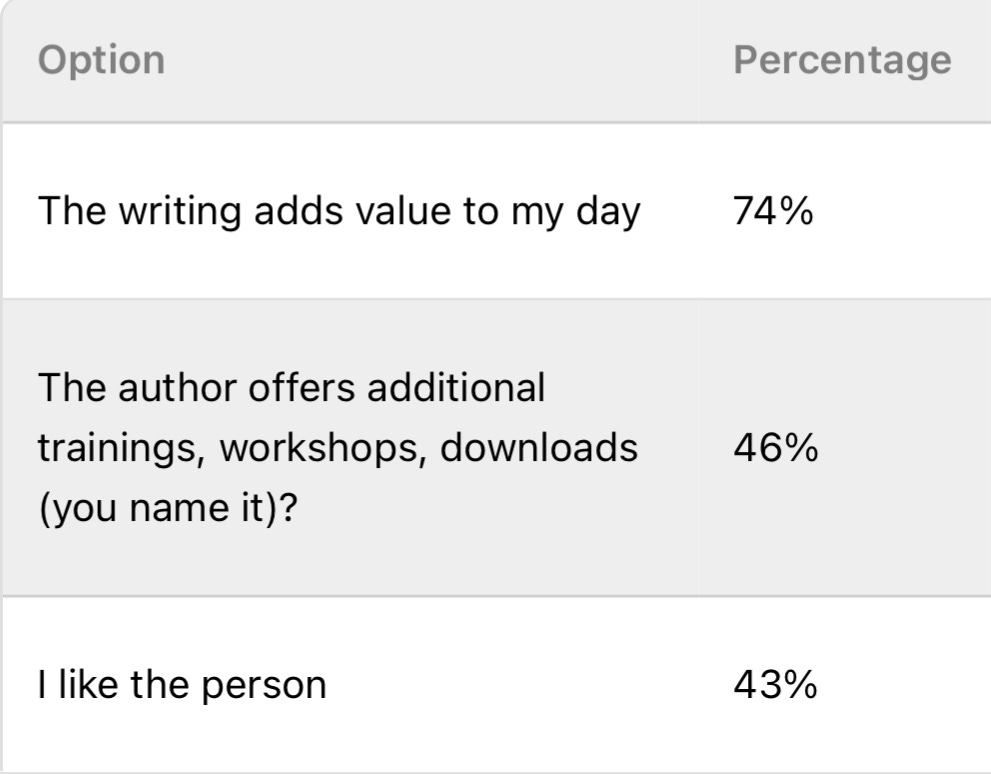
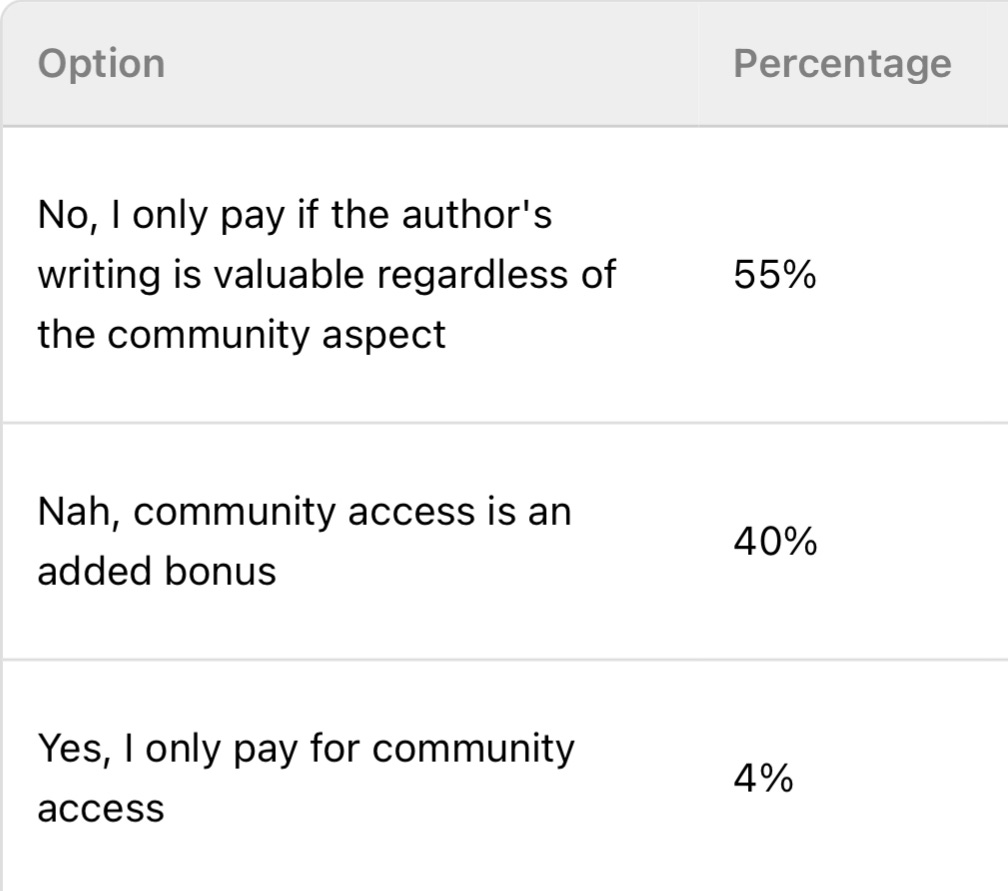
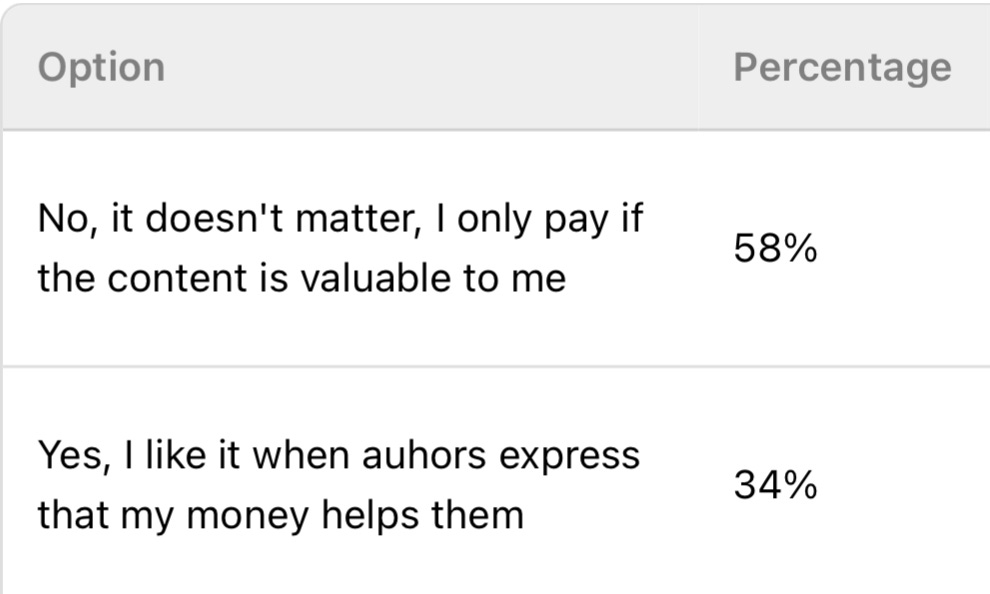
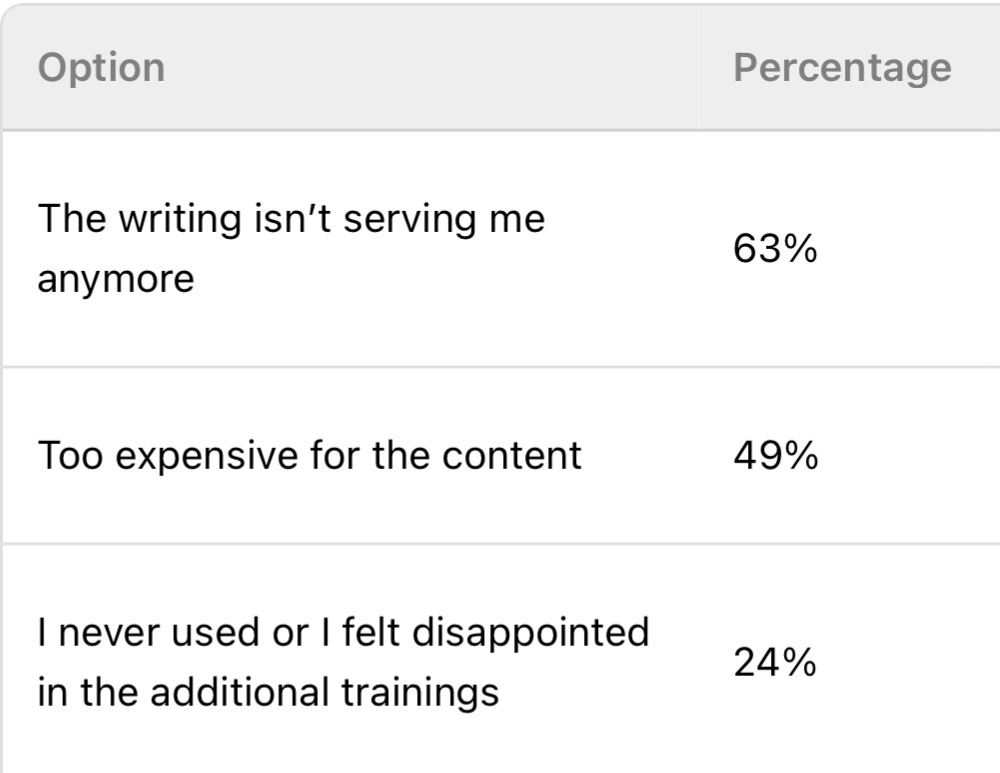
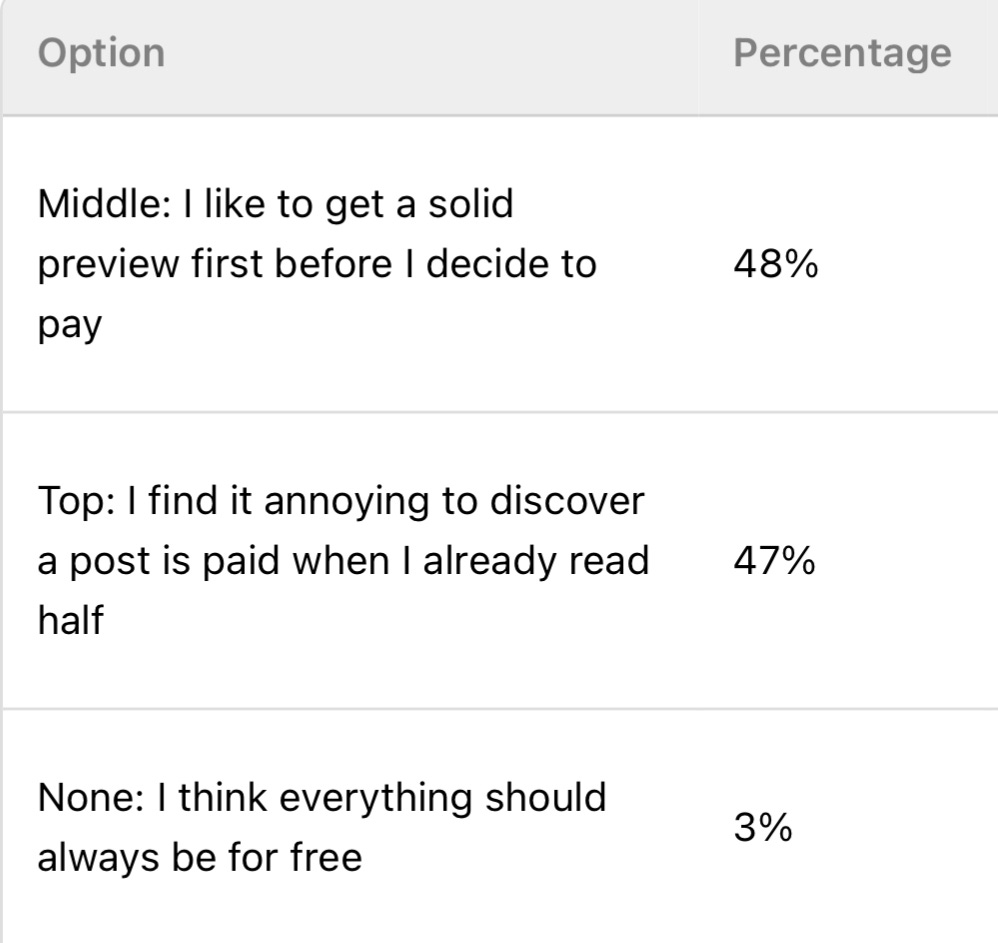
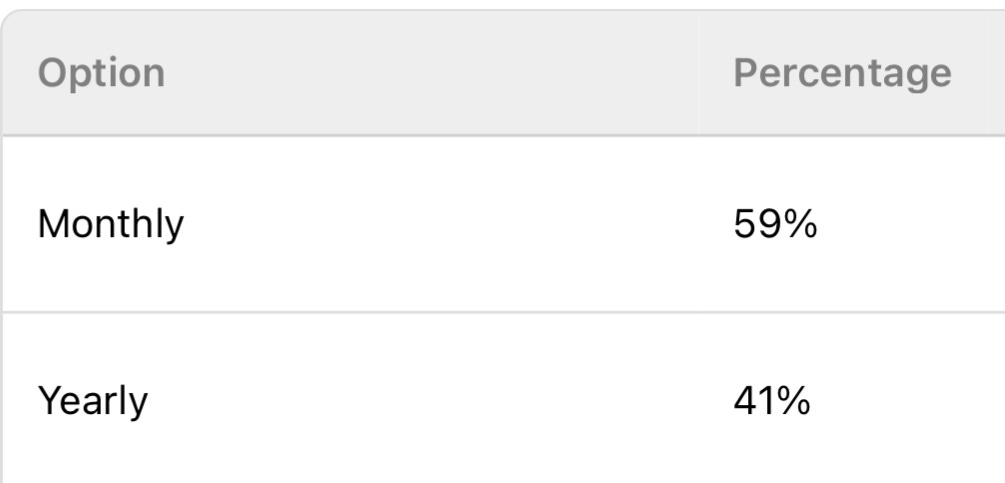
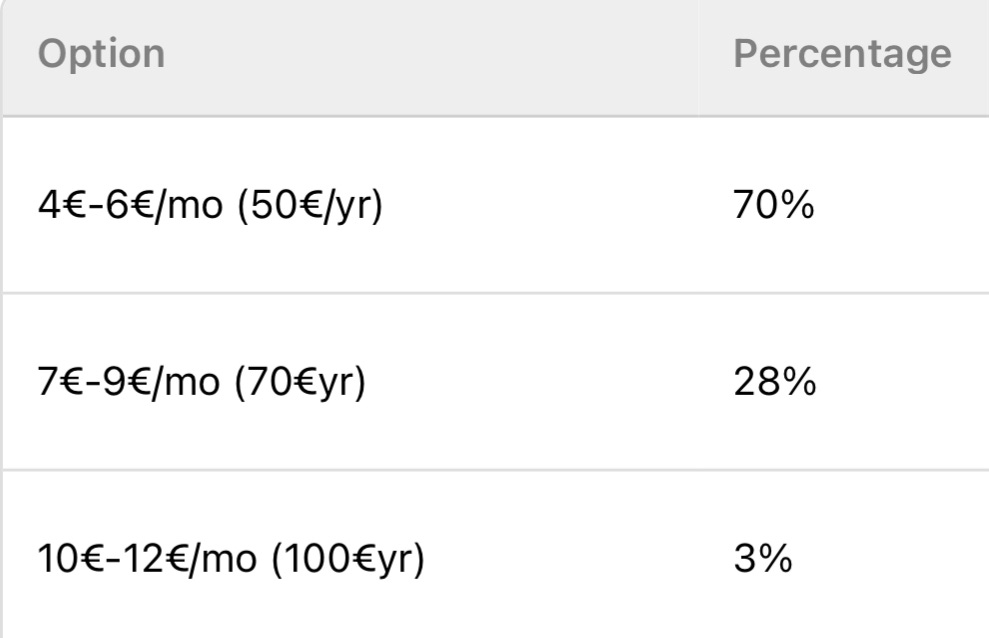
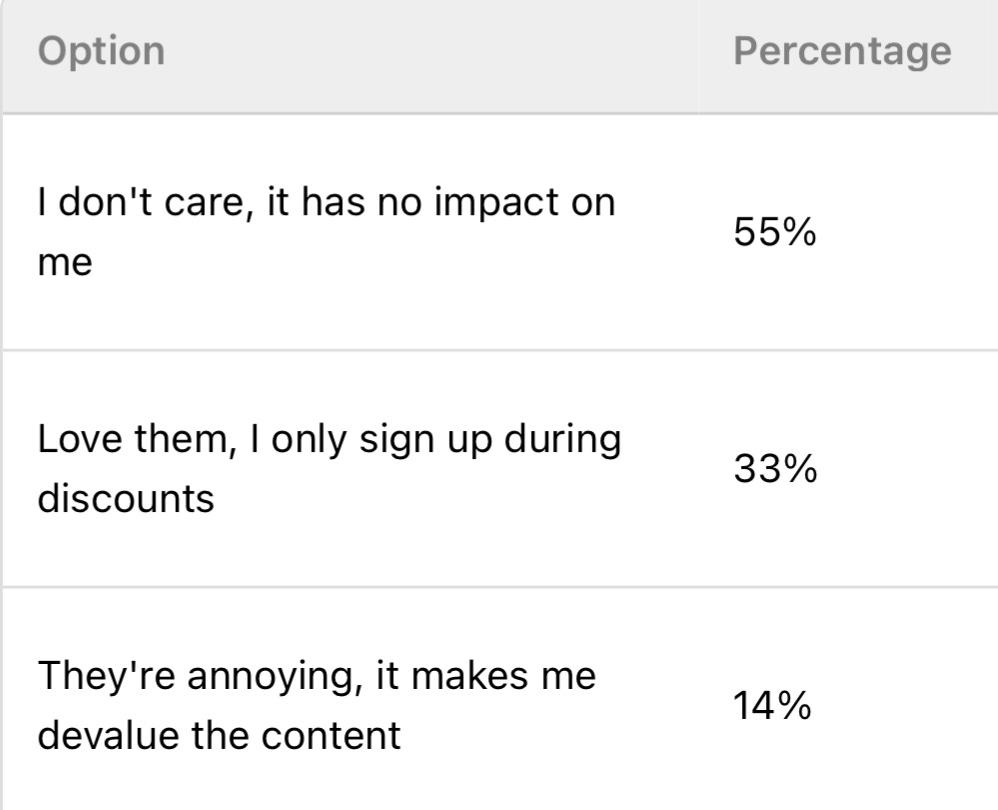


"We don’t need more stuff, we need better stuff" - this absolutely made my day. I've been thinking for far too long about all the extras I could be offering, and it's just exhausting.
Of the 74% who would pay for a newsletter because it adds value to their day (not because of extra bonuses, etc.), I'd be curious to know how many of these people are also writers on Substack. Does the general public who are not writers value these newsletters in the same way?